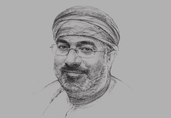Low oil prices will undoubtedly continue to be a significant challenge for Bahrain in 2016. However the kingdom’s early moves to diversify its economy mean the country is well placed to weather the storm and non-oil segments are expected to continue performing well in 2016.
The Middle East Industry
A continued scaling back on energy, feedstock and utilities subsidies is likely to impact earnings in Saudi Arabia’s industrial sector, potentially reducing its long-held competitive edge.
Articles & Analysis | Oman's vast solar power potential put to use from The Report: Oman 2016
In late 2015 in the desert of southern Oman, work is due to start on a $600m solar plant capable of producing a peak output of 1 GW of thermal energy. By comparison, the current largest photovoltaic (PV) solar plant in the world – the Solar Star project in California – produces 579 MW, or a little over half as much energy as the plant being...
Articles & Analysis | Oman's electricity regulator extends market reforms from The Report: Oman 2016
For the Omani power sector, 2015 was a year to look back and take stock. In the 10 years since market reforms were introduced, the industry has witnessed a 164% increase in supply and a 75% increase in the number of accounts.
Interviews & Viewpoints | Qais Saud Al Zakwani, Executive Director, Authority for Electricity Regulation: Interview from The Report: Oman 2016
How has growing energy consumption supported the introduction of cost-reflective tariffs, and how can energy efficiency be further enhanced?
Interviews & Viewpoints | Yahya bin Said bin Abdullah Al Jabri, Chairman, Special Economic Zone Authority Duqm (SEZAD): Interview from The Report: Oman 2016
What impact, if any, will the oil price slump have on the construction of the Duqm project?



